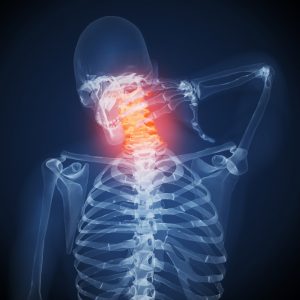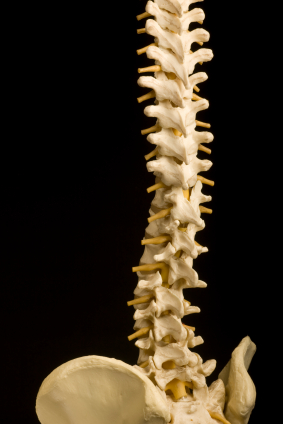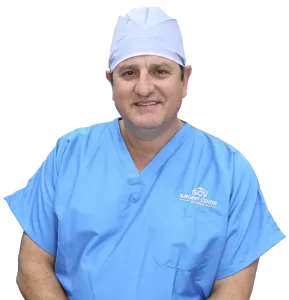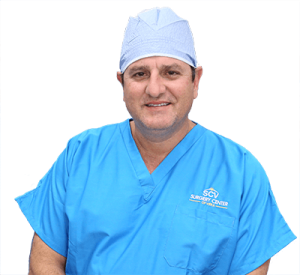
Every day millions of people across the United States experience back pain. If you are one of these people, this article will help you decide if back surgery is right for you by walking you through the different types of surgery offered, the recovery times, and the risks and benefits of each.
Most people who have experienced back pain for prolonged periods will have most likely tried various non-surgical procedures, physical therapy, medications, massages, etc. If these non-surgical treatments have not worked and you’re still living in pain, it’s time to discuss back surgery.
Back surgery aims to change the patient's anatomy to provide a cure for various types of pain they may be feeling associated with the back and spine. Watch this video to learn about chronic back pain explained.
There are a wide number of symptoms and conditions that can cause back pain. Which is why there are various procedures you can undergo depending on your individual situation.
It’s essential to consult your doctor regarding what pain you feel; this will enable them to steer you towards the appropriate treatment and procedure available.
Back surgery of any type may seem daunting. But, with new technology we have available now, there are highly-effective, minimally invasive surgeries that can cure your pain and quicken your recovery.
Back surgery is reasonable for those who have felt persistent pain for several months or more, finding no relief with non-surgical procedures.
When a patient has been experiencing back or neck pain for months and finds no relief in alternative medication, physical therapy, or other non-surgical procedures, back surgery may be advised.
Suppose you are someone who has been living constantly in pain from the degeneration of discs, spinal stenosis, pain between vertebrae, bone spurs, herniated disc(s), bulging disc(s) or other conditions. Back surgery may be the only option to help you get back to living a full and pain-free life..
If you are unsure if back surgery is the best option for you, you can use the Deuk Spine Institute Free MRI Review to see if you’re a candidate for treatment.
Before deciding whether or not you should get back surgery, it’s essential to understand the benefits and risks of the procedure.
What it is:
Deuk Laser Disc Repair is a minimally invasive procedure where the surgeon uses an endoscope (a narrow tube with a light and camera attached) to reach the source of back pain without the removal of stabilizing joints, bones or ligaments. The procedure is peer reviewed and published as a safe and effective FDA approved treatment for back pain from annular tears, herniated discs, bulging discs, degenerated discs and spinal stenosis.
Using a thin endoscope to envision the damaged disc, the surgeon uses a precision laser to remove only the damaged disc tissue causing pain.(link here to animation) This damaged tissue is only 5 to 10% of the total disc tissue; therefore, the precision laser will not damage the surrounding bone and tissues, preserving the healthy disc. By leaving this healthy disc tissue in place, spinal implants like artificial discs, screws, rods, cages and fusion are not necessary and patients are up walking just minutes after the surgery. No hospital is needed for this outpatient procedure.
The laser energy obliterates the herniated disc material and debrides the annular tear, allowing pain-causing inflammation to cease. This unique technique gently spreads open tissues microscopically avoiding the damage other types of spine surgery mentioned below cause. The safest approach to your spine is used every time hence avoiding the complications of dangerous open surgeries and those required to go through your stomach to your spine.
Deuk Laser Disc Repair can treat bulging discs, sciatica, spinal stenosis, pinched nerves, herniated discs and other conditions that cause intense, chronic pain. This procedure requires no hospital stay, no narcotic pain killers, and no opioids. After the procedure, patients can walk out of the facility with a ¼ inch incision and a bandaid.

Deuk Spine Institute has a 95% success rate in eliminating pain with zero complications in sixteen years of performing this procedure and even offers a surgical warranty for patients choosing this option.
By traveling the world and studying emerging surgical technologies and techniques, Dr. Ara Deukmedjian was able to develop his laser technology taking into account various best practices.. He’s been able to develop an innovative and unique method of using laser technology to heal the spine avoiding any fusions, drilling, implants or pain.
Recovery time:
This precision laser procedure is uniquely recognized for its gentle, minimally invasive method. The method avoids explicitly drilling, implanting, or fusing. Leaving patients free of pain and able to walk out of the recovery room within an hour.. With just a 4-millimeter incision and no internal damage or scarring the wound will heal within days.
Within 2 days patients have shared they are going about their everyday life pain-free and are typically back at work within the week.
Customer testimonials state, “I walked out of the facility with my wife. Walked. That surprised me”, “Had surgery within a week, I can put my socks on, clip my toenails, getting my 30’s back.”
Patients are encouraged to use hot/cold packs if need be within the week of recovering and are not encouraged to lift anything over 20 pounds. Patients are also advised to contact the facility if any redness, swelling or pain occurs after the procedure.
Benefits of laser spine surgery:
Risks of laser spine surgery:
Cost: Request a free MRI review for a quote
Where to get it: Deuk Spine Institute
(Offered at Deuk Spine Institute)
Different types:
What it is:
During any spinal fusion surgery, the surgeon permanently connects or fuses two or more vertebrae (the bones that make up the spine) together. When these vertebrae are fused they heal into a singular solid, long bone. This surgical technique was created to mimic the normal healing process of broken bones.
The spine consists of a disc space in the front and paired facet joints behind it; whenever you move your spine, these structures allow for the motion and cause pain. During a spinal fusion, vertebral segments are fused using a bone graft to stop the motion at one or more vertebra. When the bone is “fused” this means that the bone graft placed in between vertebras grows to join the two segments. Bone grafts are taken from the patient’s hip during surgery or can be taken from a cadaver bone or manufactured ahead of time. Unfortunately, bone grafts are common causes of unwanted spinal surgery complications.
The process of spinal fusion is when the surgeon places a bone graft between the problematic, pain-causing vertebrae and fuses the vertebrae to create a solid unit. This solid unit limits the motion of the pain-causing vertebrae. Metal plates, rods or screws may be used in the procedure to ensure correct bone graft growth and healing. Some techniques involve setting up a biological response to generate the growth of a bone graft between the vertebrae which creates a bone fusion over time.

Recovery time:
It’s important to note the long recovery time when considering spinal fusion surgery. Patients should note that a bone fusion is not immediate; fusion of bones occurs when the bone graft placed during surgery eventually grows to form one bone. This process usually takes between 3-6 months.
The first 1-3 months after surgery are critical in the healing process of a spinal fusion because the fusion is establishing. After roughly 6 months, patients can usually resume all normal activities if approved by their surgeon. Over the course of the year following this type of surgery the bone will continue to solidify.
At Deuk Spine Institute spinal fusions are performed outpatient so patients are able to go home the same day. This is possible because of advanced techniques used permitting reduced blood loss and better pain control. At other facilities, patients will usually be released from the hospital within 2 or 4 days after surgery after being monitored for any complications or infections. After about a month, patients are encouraged to see a physical therapist to help reintroduce motion into their back. Normally, patients can resume driving, if off of opioid medications, after 4 weeks, and should be able to go back to office or sedentary jobs within 6 weeks.
Benefits of spinal fusion surgery:
Risks of spinal fusion surgery:
Cost: $60,000 - $500,000
Different Types:
What it is:
During surgery, the surgeon makes an incision on the patient’s back to access the problematic vertebrae. This procedure, sometimes referred to as “open decompression,” focuses on the lamina and attached ligaments, the part of the vertebrae that forms the vertebral arch in your spine found on the back (posterior) part of the bone to treat spinal stenosis. Once the surgeon has access to the vertebra, they remove the lamina and ligaments from the spine and any bone spurs or fragments that may also be pinching nerves. Unfortunately, laminectomy and laminotomy do not treat back pain or neck pain and frequently make back pain worse.
A laminectomy/laminotomy is usually completed to treat the symptoms of central spinal stenosis, a condition that narrows the spinal canal. The removal of the lamina from the vertebrae ultimately creates more space for the spinal cord and nerves from the narrowing caused by spinal stenosis. With the extra space allotted for the spine and with the removal of the source of pressure, patients will feel a decrease in their leg or arm symptoms but not back pain. The surgery usually takes 2-3 hours.
During a laminectomy/laminotomy, it is common for the surgeon to perform a spinal fusion because of the instability the laminectomy causes. A bone graft is placed between vertebrae discs to fuse them together, forming a single, elongated bone. Laminotomy is always performed as part of a lumbar microdiscectomy to unpinch nerves to the legs.

Source: https://www.spine-health.com/
Recovery time:
After laminectomy/laminotomy surgery, patients are able to leave the hospital after 2-4 days to ensure the lowest risk of complication or infection. Powerful pain-relieving medications and stool softeners are recommended by most surgeons the days following removal from the hospital. Scar tissue forms around the spine and nerves.
During the first month at home, it is important to restrict intense exercise and activity to ensure stability in the spine while keeping in mind movement is beneficial to ultimately restore full movement. Patients will most likely see a physical therapist to assist in recovery that can take months or even years.
Patients may resume driving within 2 months after surgery if not taking opioid medications. Full recovery is dependent on the patient’s health before surgery, the procedure itself, and how the recovery went. Most patients experience a full recovery after 2-6 months of surgery and feel a small degree of newfound stiffness that lasts a lifetime.
Benefits of laminectomy/laminotomy surgery:
Risks of laminectomy/laminotomy surgery:
Cost: $50,000 - $150,000
What it is:
The spinal cord runs through the spinal column which is made up of vertebrae. The vertebrates found in the spinal column are in place to protect the cord and nerves from injury. Discs can be found between each vertebra to reduce rubbing and provide support. Over time these discs can become injured with annular tears and weaken due to age or injury which causes the soft inner part of the disc to bulge out, creating a herniated or bulging disc. When a disc becomes herniated, it can press on the spinal nerves and cause leg and back pain.
A discectomy surgery aims to take the herniated part of the damaged disc, easing pressure on the nerves. The surgeon does this by accessing the spine through the patient’s back (posterior). Using various tools, the surgeon cuts through tissues surrounding the vertebra and removes the herniated part of the disc. A discectomy is commonly performed on the lumbar (lower) spine and relieves leg pain the patients may be feeling as a result of a herniated disc. This procedure does not help back pain and frequently makes it permanently worse.
A discectomy means “cutting out the disc”, within one procedure patients can have one (single-level) or multiple discs (multi-level) removed. “Levels” refer to different vertebrae. A discectomy is performed using an “open” technique. With this technique, the surgeon creates a larger incision to see the spine directly, which is more invasive than the minimally invasive approach (see Microdiscectomy).

Recovery time:
Patients will usually be hospitalized for the days following the procedure to ensure minimal risk of infection and complications. Leg pain should immediately cease in herniated disc post-surgery, but patients may confront discomfort and soreness from the incision spot and spinal nerve.
Patients are expected to return to desk work within 3-4 weeks, and heavy lifting jobs within 8-12 weeks. Surgeons may prescribe physical therapy to help with gaining full movement back to the spine.
Benefits of discectomy surgery:
Risks of discectomy surgery:
What it is:
A mircodiscectomy surgery is similar to a discectomy surgery, although it uses a smaller skin incision and a microscope. It is usually recommended for those suffering from sciatica, a condition caused by compression of spinal nerves.
This technique is considered when patients feel pain or numbness from a herniated disc that puts pressure on the spinal nerve. A herniated disc is when the soft, inner tissue of the discs found in vertebrae bulges out through an annular tear, which ultimately puts pressure on nerves in the spinal column.

The technique surgeons use during a mircodiscectomy aims to remove the disc material that has leaked and is putting pressure on surrounding nerves. During the procedure, the surgeon makes a small 1-2 inch incision on the patient’s back above the herniated disc spot. After cutting the muscle away from the spine, the surgeon removes bone and ligaments from the spine to get access to the herniated disc material. Unfortunately, part of a spinal facet joint must also be removed and this leads to the greatest amount of spinal instability. Spinal instability magnifies back pain and eventually patients require a second procedure like fusion.
Once the herniated disc material is removed, the pressure on the surrounding nerves is relieved. The surrounding nerves return to having the appropriate amount of space within the spinal column, and patients should no longer feel pain or numbness in their leg.
Recovery time:
A minimally invasive discectomy technique is usually performed as an outpatient procedure, meaning patients return home the same day. Since a minimally invasive technique requires only a small incision, recovery time will be faster than if a patient is recovering from an “open” technique.
Pain in the leg should immediately cease in herniated disc post-surgery, but patients may experience discomfort and soreness from the incision spot. Patients are told to avoid driving, sitting for prolonged periods, and lifting anything heavy for the first 1-2 weeks. Surgeons may prescribe physical therapy to help patients regain full movement of the spine. Full recovery for most patients is roughly 6 weeks to 3 months.
Benefits of mircodiscectomy surgery:
Risks of mircodiscectomy surgery:
What it is:
Located in the pelvis the sacroiliac joint, commonly called the SI joint, links the iliac (pelvic) bones to the sacrum (the lowest part of the spine located above the tailbone). This specific joint is responsible for shock absorption, making sure impactful forces do not reach the spine. The sacroiliac joint can be injured and/or deteriorate over time which causes pain in the buttocks, low back and legs. The SI Joint is an uncommon but important cause of pelvic and lower back pain. Prior to any surgery, injections and therapy should be tried as they result in pain resolution 90% of the time if done properly.
During a sacroiliac joint surgery, the patient lays face down and the surgeon makes a small, minimally invasive incision on the side of the buttocks. A bone graft is placed between the ilium and sacrum with the intention of the graft growing to connect the two bones. By connecting the bones together the patient will be relieved from pain caused by the joint.
The bone graft used is usually taken from the hip bone during surgery. The bone graft does not automatically fuse the bones together; over time will grow to create one, immobile joint. Once the procedure is complete, the bone graft will continue to solidify for upto 12 months after the procedure but patients will feel immediate relief.
Recovery time:
Patients who undergo SI fusion surgery are usually cleared to go home the same or next day after the procedure. On the days following the procedure the patient may feel some pain from the incision or bone graft site, in this case, surgeons recommend icing the area and taking pain medication. Patients will be up and walking within hours usually with the help of a cane or walker. Within a month following the surgery it’s expected that patients should be able to walk around freely.
Surgeons may prescribe physical therapy a month after to ensure the proper fusion of the joint. Patients should avoid heavy lifting, or strenuous activity for at least 3-4 months after and then after consulting with a surgeon. Within 6 months patients should be fully back to living their normal lives.
Benefits of SI surgery:
Risks of SI surgery:
What it is:
A procedure recommended for patients who are suffering from reoccurring back pain for 6 months or longer, who find no relief in other non-surgical procedures. Patients who have tried physical therapy, medications etc. and still feel unremitting back pain usually consider artificial disc replacement. During an artificial disc surgery, the surgeon removes the disc that is causing pain and replaces it with an artificial replacement.

The spine includes a series of vertebrae that are separated by intervertebral discs. These discs allow for movement in the spine and protect the vertebra from rubbing against each other. Over time, discs can become damaged or begin to deteriorate, causing back pain. When discs become unable to support the vertebra, the surgeon may recommend the placement of an artificial disc.
The procedure removes the damaged or deteriorated disc and replaces it with an artificial disc designed to mimic the disc’s natural movement. Surgeons reach the spine through the anterior (front) of the patient through the abdomen, moving aside organs. This is generally regarded as the most risky and dangerous approach to the spine because of the severe complications known to occur with this type of surgery. Once the surgeon has reached the spine, they are able to remove the damaged disc and replace it with an identical artificial disc.
Recovery time:
Following an artificial disc replacement, patients should expect to stay in the hospital for 2-3 days before returning home. Patients will be up and walking within 24 hours of surgery. The benefit of the artificial disc is that there is no new bone that needs to heal; therefore patients should have full mobility of their mid-section.
Patients should perform basic exercises and return to work after the first 6 weeks of surgery. Surgeons advise avoiding any movement that may cause hyperextension of the back and will most likely prescribe physical therapy.
Benefits of artificial disc:
Risks of artificial disc:
It’s always a good idea to consider all factors when getting anesthesia during surgery. You should ask yourself the following questions to better prepare yourself:
Make sure you always consult with your doctor before undergoing any type of anesthesia. At Deuk Spine Institute, you will find experts invested in you, answering all questions you may have.
Pain associated with your back surgery may be a significant symptom during your recovery. You may know others who have thought long and hard about back surgery, got it, and complained even more about the pain they felt after.
This doesn’t mean you’ll have pain after your surgery.
The success of your surgery and any discomfort you feel afterward is largely dependent on the type of back surgery you have and the level of care you receive.
The Deuk Spine Institute is a premier concierge spine surgery clinic and outpatient surgical center specializing in minimally-invasive surgical techniques and comprehensive spine treatments designed to cure back and neck pain.
After receiving surgery at Deuk Spine Institute, you will be up and walking within one hour of your procedure. Testimonials from patients confirm this, stating, “I was very impressed. I walked out of the facility with my wife. Walked. That surprised me”, “I got home and I could remember things and think clearly and I was pain free...I dont have pain anymore. In two weeks you couldn’t even see where the incision was.”
For more information about Deuk Spine Institute and to begin your path towards living a pain-free life → click here



"*" indicates required fields

